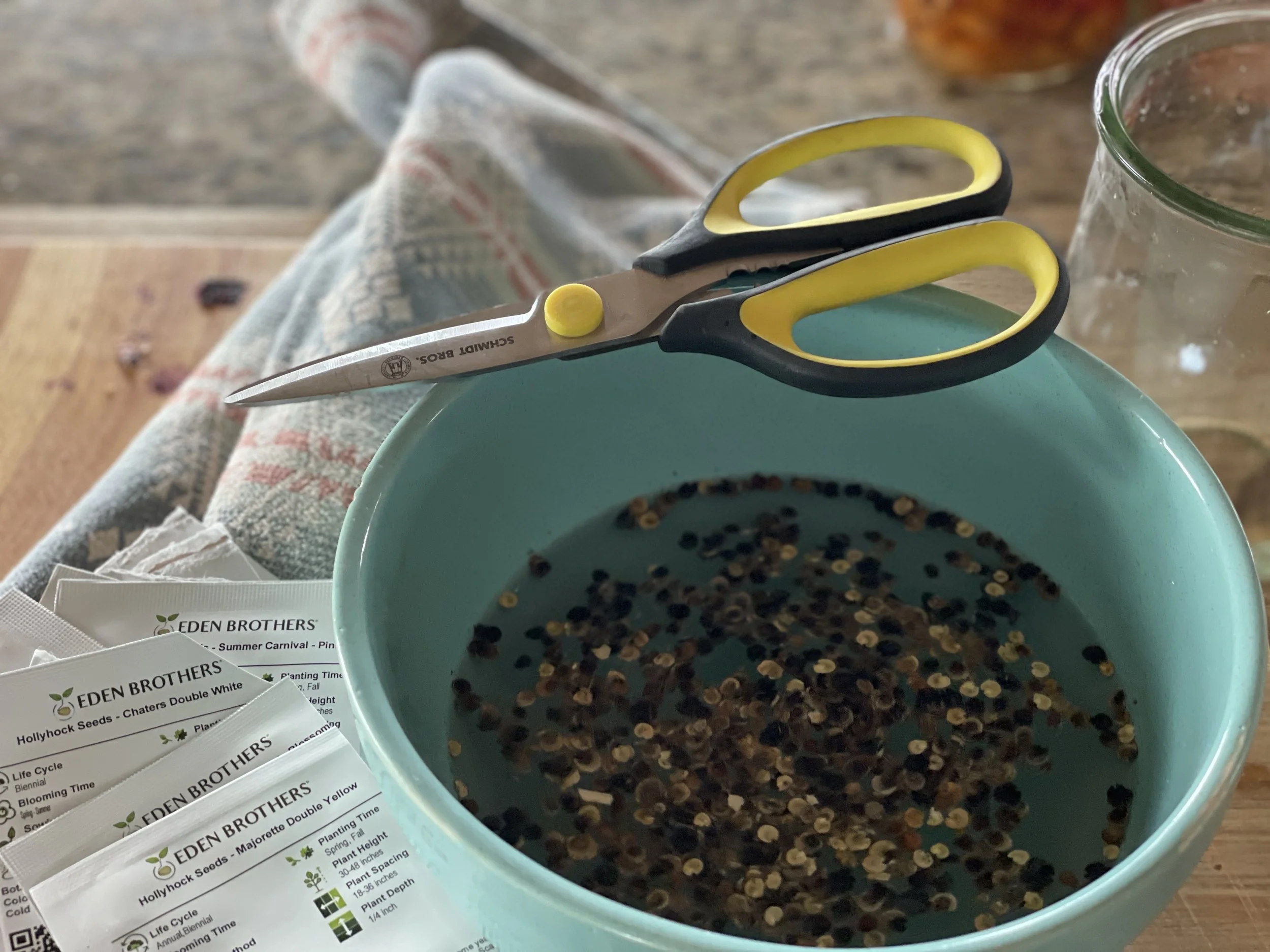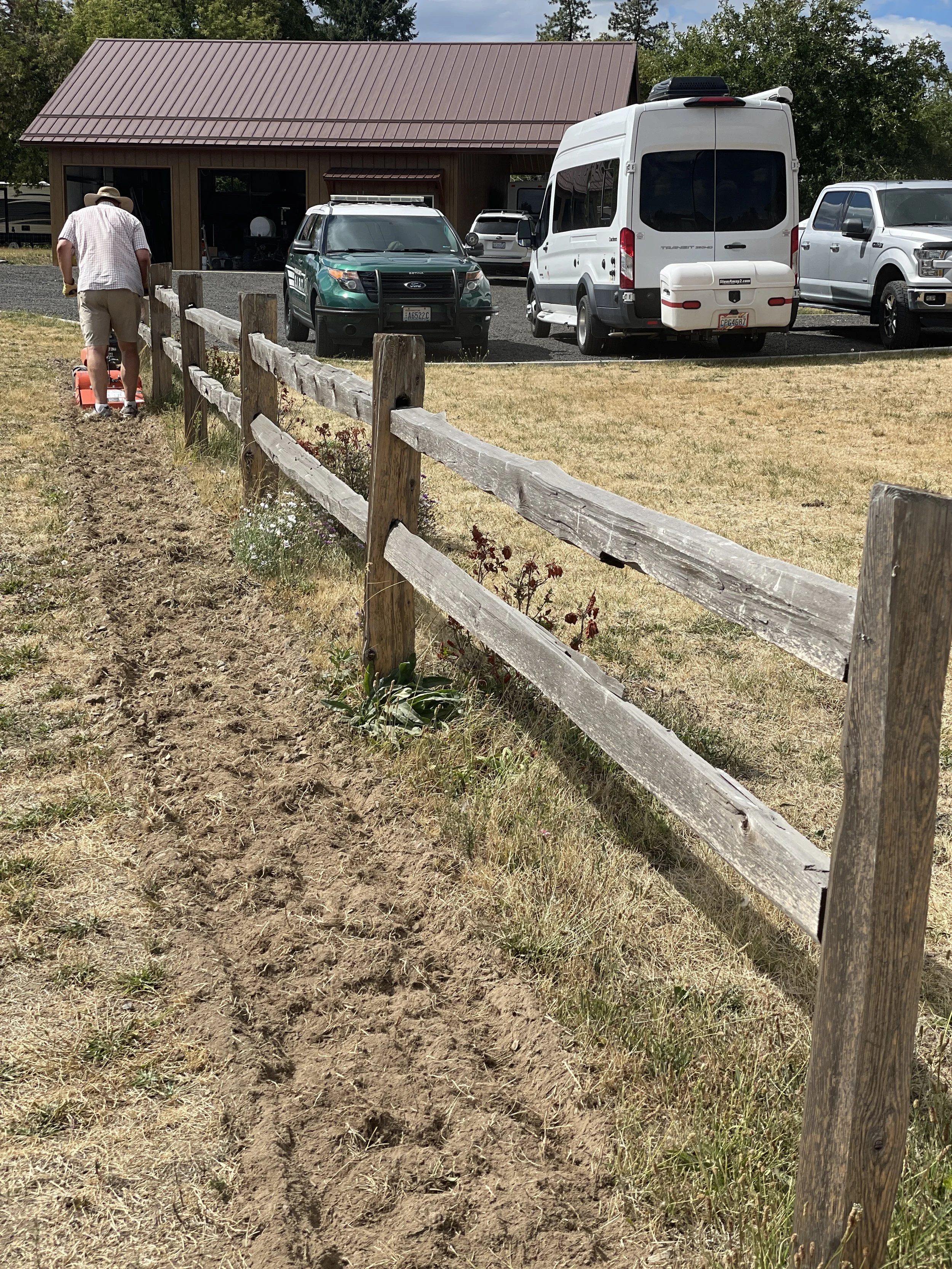Seeding hollyhocks for next year
Sometimes information is actually detrimental. When the kids were little I remember tossing a few hollyhock seeds in a tiny patch of weedy dirt behind our garage in 79th street, and they actually grew! I didn’t think nothing of it, because I didn’t know better. There was no internet to scare me away.
Fast forward 30+ years and I now know that growing hollyhocks can actually be difficult. Who knew? Low germination rates are common, and they are not really hardy up here, so we treat them as an annual, though once you get them going apparently they can self-sow pretty abundantly. Even my go-to expert source for Washington state cut flower growing, Erin of Floret Farms, says she has trouble getting hollyhocks to germinate reliably. Other than soaking the seeds to soften them (also a Martha tip), she wishes us luck!
So I decided to channel my 20-something clueles, pre-Internet self and give it a go and try to germinate some seedlings this fall that can winter over for next spring. Let the experiment begin!
I never ordered seeds from this “catalog” provider before, so we will see. I just mixed all of the packets together and let them soak overnight, since hollyhock seeds have a pretty tough exterior. Allegedly this helps germination a bit.
Steve broke out the tiller and tilled a row behind the decorative split rail fence in front of the house. Unfortunately, he found an in-ground wasp nest and came running into the house, being attacked by really mad wasps.
The abandoned equipment.
The hole where the nest was. Steve was so mad he dumped an entire bottle of alcohol (rubbing, not drinking kind) into the nest. We have millions of these holes all over, though typically they are abandoned vole holes. He wasn’t even tilling directly on top of this spot - he was a foot and a half away.
He managed to get away with only 6 stings. Wasp stings are different than bee stings in several ways. First, wasps don’t die when they sting (unlike honeybees). So one wasp can sting you over and over. Second, wasp stings tend to hurt more than itch, which actually is a plus. Because a bee sting can itch maddeningly for days. This is the little device that Montana found years ago that really works. It creates a little suction that hold hold over the sting. For bee stings, this can actually draw out the stinger and also some of the venom. For wasps its mostly the latter. Crazy helpful little device.
Steve championing on to finish the job.
This area was originally a large-pebble gravel parking area. The driveway just went directly to this big parking lot right in front of the house. We really hated looking out the front porch and staring at Steve’s truck grill! So we added all of the black gravel area in front of the shop. Which actually we needed on this day, because at one point we had the van, my Subaru, Steve’s truck, Steve’s SCOPE car, the tractor, Big Red, and 2 different riding mowers all out on the gravel at the same time.
But - because the area Steve was tilling was so rocky, it was not very easy work. I had a partial bag of potting soil, so I dropped some extra dirt here and there.
Hollyhock seeds have to be planted ON TOP of the dirt. They need light to germinate. Can you spot the seeds?
Stay tuned next month to see if any germinate!








